By Emma Marler
Miao people are one the 56 ethnic groups in China. Their vibrant culture attracts visitors from all over the world. They are well renowned for their silver crafting and embroidery skills. Let’s now try to imagine to spend a day in the life of the Miao community. It’s going to be an exciting journey!
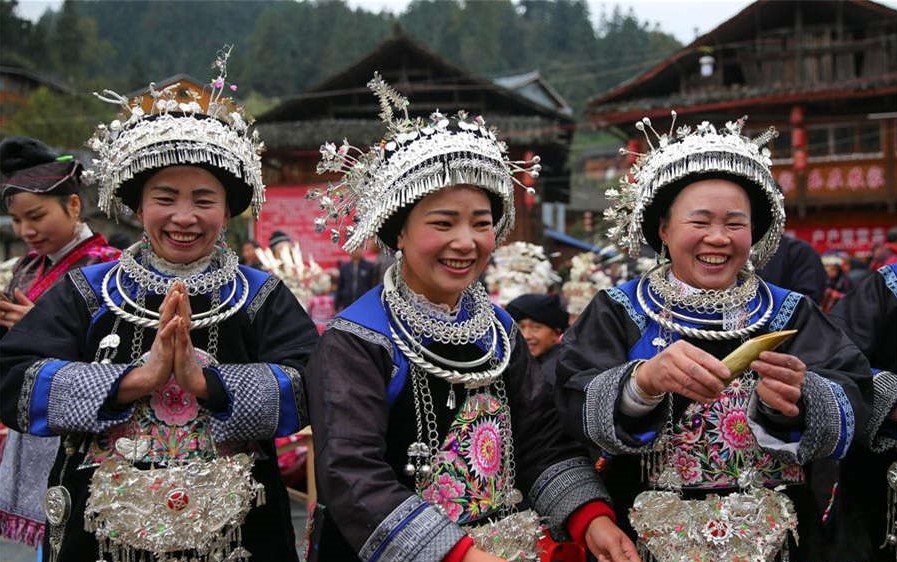
The majority of Miao people lives in Guizhou province in Southern China. There is an old saying that describes their homeland this way: “No three days are clear, no three feet of land are level, and no one has three ounces of silver”. Guizhou is therefore known for its mountainous sceneries, long rainy seasons and for not being very prosperous economically.
Their houses are built on steep hillsides and use stilts for support. Their tradition to plant bamboo and trees around their homes makes the wooden buildings blend in beautifully with the natural surroundings. But it’s at night that magic happens. When it gets dark and each family turns the lights on, the mountains seem to be lit up.
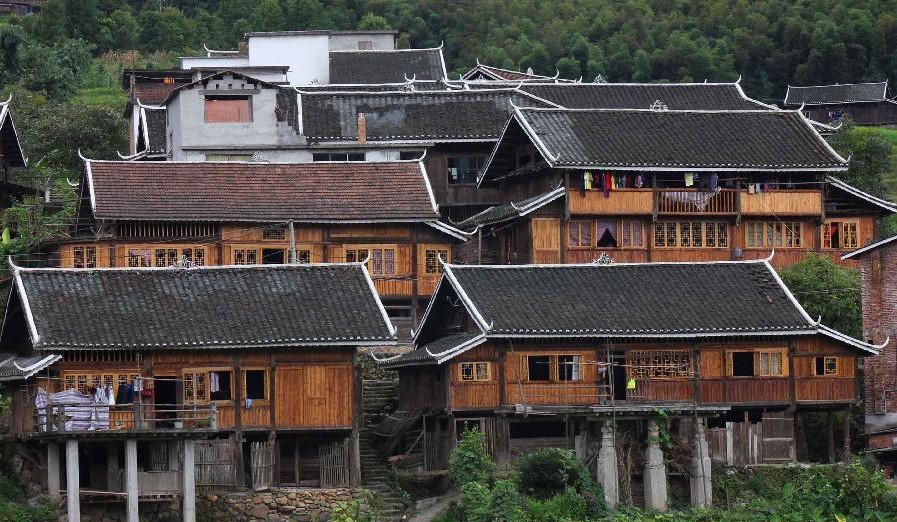
The cultivation of rice has been their main means of subsistence, especially before tourism started to spring up. As many Chinese liquors, Miao’s mijiu (米酒) is also rice-based. Hospitality is a big part of their culture. Guest are welcomed with this rice wine to toast while dancing and singing takes place to greet visitors. Miao are great cooks and they love sour and spicy food. There is even an ancient saying that states that “without eating a sour dish for three days, people will stagger with weak legs”! Fish soup is Miao’s staple dish. Fresh carps from the rice fields are cooked in a boiling soup with chili pepper, garlic and tomatoes.
If you go and visit, you might be lucky enough to participate in one of their Long Table banquets! During special occasions like New Year or weddings, every household brings a home cooked dish and shares it with the rest of the extended family and their guests.
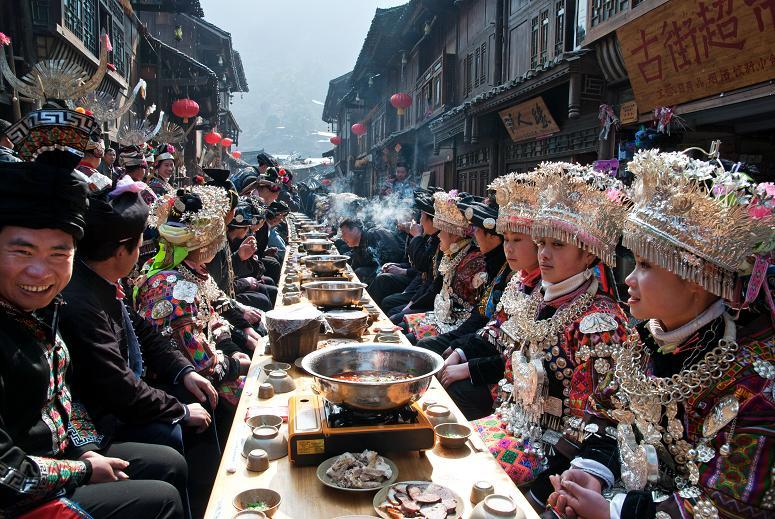
Apart from agriculture, Miao people have cultivated several artistic skills along the years. Men are exceptional at silver work. At festivals or special occasions girl accessorize their dresses with head to toe silver jewelry, it can weigh up to 10 kilograms! Silver is believed to symbolize light and it can scare away evil spirits. Silver is therefore a recurring element in the most important milestones of their life. When a new born baby takes his first bath, parents put a piece of silver into the water to wish for a happy future. Families start collecting silver jewelry for their daughter’s wedding since the day they are born.
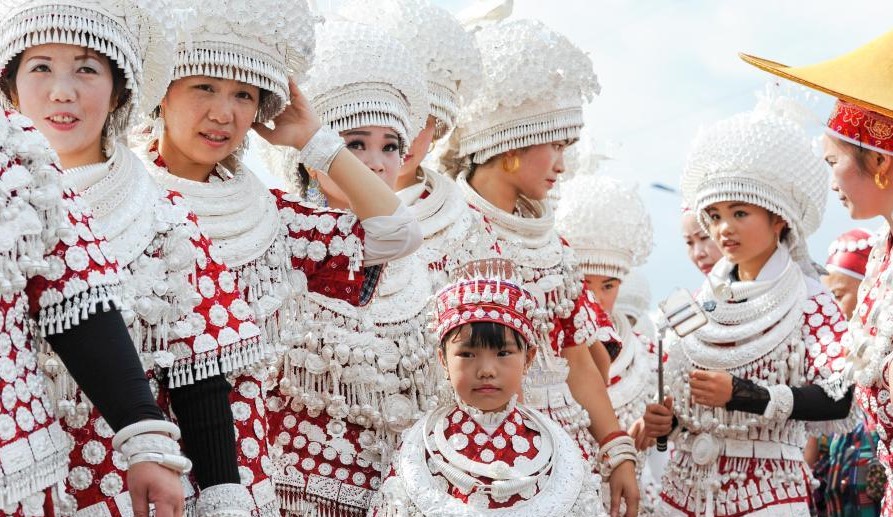
The traditional costume is a perfect representation of Miao culture and history because it combines both silver work and embroidery. Women are extremely talented artists and produce the most stunning embroidery pieces. The techniques they use are very elaborate and to finish a set of traditional clothes can take up to two years. To recognize a Miao embroidery pattern you have to look out for natural and geometric shapes in beautiful bold colours.
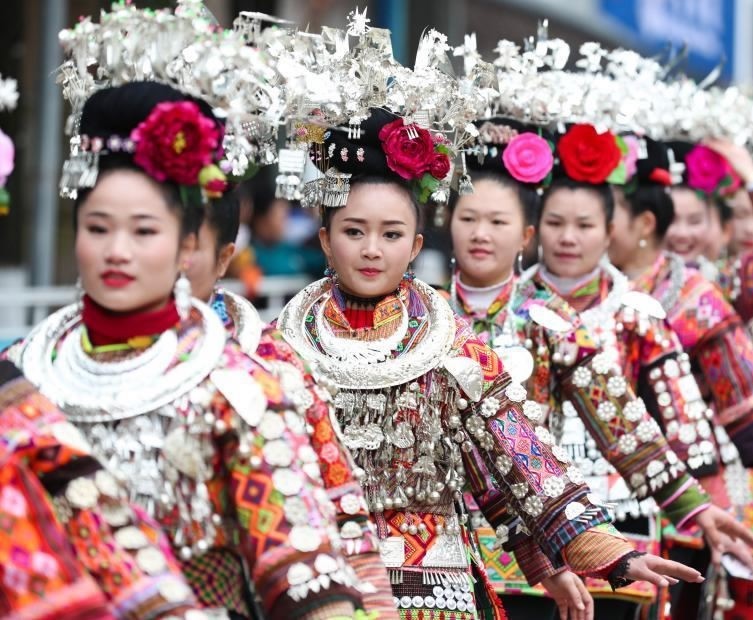
Their embroidery techniques are passed on for generations and girls start learning how to weave, embroider and cross-stitch at the age of 6. When a girl finishes her first embroidered dress all on her own it shows that she is ready to get married.
Miao people have also mastered the art of batik. According to a Miao traditional song, a young girl dreamt of some bees landing on her blue skirt one night and when she woke up she found some wax on it. After washing it a few times she realised that those spots were flowered shaped and had adorned her simple skirt.

Batik and embroidery are an essential way for Miao people to express themselves because they don’t have their own written language. Those patterns are a visual language to transmit their culture, religion and history to the rest of the world.
With the passing of time and the rise of globalisation, rich culture and traditions like those of the Miao are even more unique but are also at risk of dying out. Our mission is to preserve their heritage and pet people know how much these ethnic minorities have to offer. We hope you enjoyed this journey into the wonders of the Miao world!
About Interact China
“A Social Enterprise in E-commerce Promoting Oriental Aesthetic Worldwide!”
Aileen & Norman co-founded Interact China in 2004 with specialization in fine Oriental Aesthetic products handmade by ethnic minorities & Han Chinese. Having direct partnerships with artisans, designers, craft masters and tailors, along with 13 years of solid experience in e-commerce via InteractChina.com, we are well positioned to bridge talented artisans in the East with the rest of the world, and directly bring you finely selected products that are of good quality and aesthetic taste.
So far we carry 3000+ goods covering Ladies Fashion via ChineseFashionStyle.com, Kungfu Fashion, Home Furnishings, Babies & Kids, Painting Arts, Textile Arts, Carving Arts, Tribal Jewelry Art, Wall Masks and Musical Instruments. Our team speak English, French, German, Spanish and Italian, and serve customers worldwide with passion and hearts.
P.S. We Need People with Similar Passion to Join Our Blogging Team!
If you have passion to write about Oriental Aesthetic in Fashion, Home Decor, Art & Crafts, Culture, Music, Books, and Charity, please contact us at bloggers@interactchina.com, we would love to hear from you!




